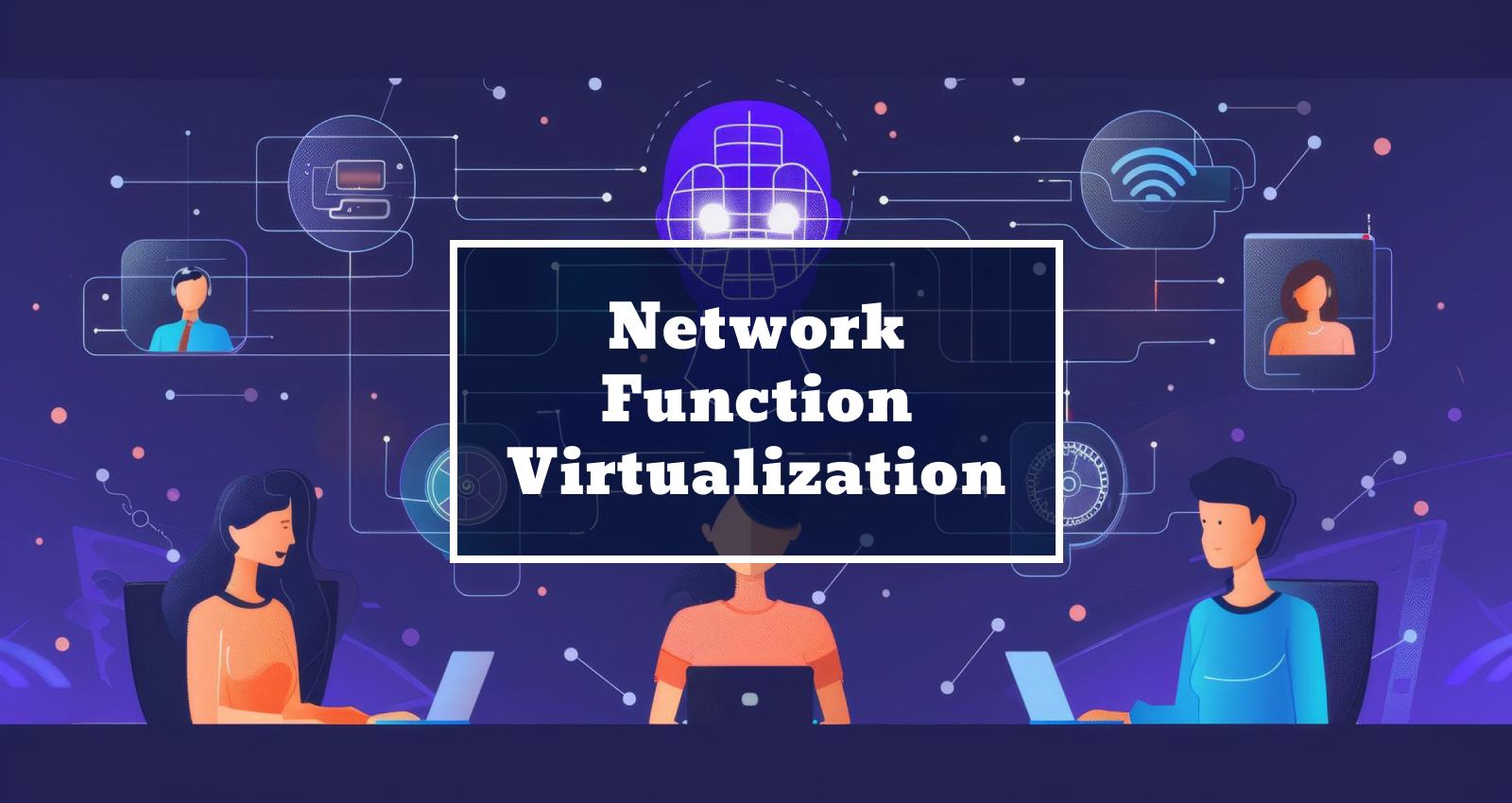Network Function Virtualization: A detailed Guide

Introduction
In today’s fast-paced digital world, businesses and service providers are constantly looking for ways to improve efficiency, reduce costs, and scale their operations. One technology that has gained significant attention for its ability to address these needs is Network Function Virtualization (NFV). NFV has become a game-changer in the IT and telecommunications industries, offering a more flexible and scalable approach to network management. In this guide, we’ll explore what Network Function Virtualization is, how it works, its key components, and the advantages it offers.
What is Network Function Virtualization?
Network Function Virtualization (NFV) is a technology that decouples network functions from dedicated hardware appliances and runs them as software on standard server hardware. Traditionally, network functions like firewalls, load balancers, and routers were deployed on specialized hardware. This approach was often expensive, difficult to scale, and required significant physical space and power.
NFV changes this by allowing these network functions to be virtualized and run on common server hardware, much like how virtual machines run on physical servers. This virtualization of network functions provides greater flexibility, cost savings, and scalability, as network services can be easily deployed, managed, and upgraded without the need for physical hardware changes.
Key Components of Network Function Virtualization
To fully understand NFV, it’s important to know its key components:
Network Functions Virtualization Infrastructure (NFVI): NFVI is the physical and virtual resources required to support the execution of Virtual Network Functions (VNFs). It includes computing, storage, and networking resources that provide the foundation for running VNFs. NFVI abstracts these resources, making it possible to deploy network functions as software, irrespective of the underlying hardware.
Virtual Network Functions (VNFs): VNFs are the software-based versions of traditional network functions, such as firewalls, load balancers, and routers. These functions can be deployed on the NFVI and can be dynamically managed, scaled, and upgraded without the need for physical hardware changes. VNFs are the core of NFV, enabling network functions to be more flexible and adaptable.
NFV Orchestrator: The NFV Orchestrator is responsible for managing the lifecycle of VNFs. It handles the deployment, scaling, monitoring, and updating of VNFs across the NFVI. The orchestrator ensures that the network services are running efficiently and can automatically adjust resources as needed to meet changing demands.
Element Managers: These are responsible for the day-to-day operations and management of individual VNFs. They monitor performance, handle configuration changes, and ensure that the VNFs are running smoothly. Element Managers work closely with the NFV Orchestrator to maintain the overall health and efficiency of the network.
Why Network Function Virtualization?
The traditional approach to network management involved deploying specialized hardware for each network function, which was not only costly but also difficult to scale and manage. Network Function Virtualization addresses these challenges by providing a software-based approach to network management. This allows service providers to:
Reduce Costs: By replacing expensive hardware appliances with software-based solutions running on standard server hardware, NFV significantly reduces capital and operational expenses.
Increase Flexibility: NFV allows for easy deployment and scaling of network functions, making it possible to quickly respond to changing demands without the need for physical hardware changes.
Improve Efficiency: NFV simplifies network management by centralizing control and automation, reducing the complexity of managing multiple hardware appliances.
How Does Network Function Virtualization Work?
NFV works by virtualizing network functions and running them as software on a shared infrastructure. Here’s a simplified breakdown of how it works:
Virtualization of Network Functions: Traditional network functions are converted into VNFs, which are software-based versions of the functions. These VNFs can run on virtual machines or containers, which are hosted on standard server hardware.
Deployment on NFVI: The VNFs are deployed on the Network Functions Virtualization Infrastructure (NFVI), which provides the necessary computing, storage, and networking resources. The NFVI abstracts these resources, allowing the VNFs to run independently of the underlying hardware.
Orchestration and Management: The NFV Orchestrator manages the deployment, scaling, and monitoring of the VNFs. It ensures that the network services are running efficiently and can automatically adjust resources based on demand.
Dynamic Scaling: One of the key advantages of NFV is its ability to scale network functions dynamically. As demand increases, the orchestrator can deploy additional VNFs to handle the load. Conversely, if demand decreases, resources can be scaled back to save costs.
Network Function Virtualization Advantages
NFV offers several advantages that make it an attractive option for service providers and businesses:
Rapid Deployment: NFV allows for quick deployment of network functions, as there is no need to wait for physical hardware to be installed. VNFs can be deployed on existing infrastructure, reducing time-to-market for new services.
Scalability: NFV enables dynamic scaling of network functions based on demand. This means that resources can be adjusted in real-time to handle changing workloads, ensuring optimal performance without over-provisioning.
Reduced Cost: By eliminating the need for specialized hardware, NFV reduces both capital and operational expenses. Service providers can use standard server hardware, which is more cost-effective and easier to maintain.
Enhanced Operations: NFV simplifies network management by centralizing control and automation. This reduces the complexity of managing multiple hardware appliances and allows for more efficient network operations.
High-end Security: NFV can enhance network security by enabling the deployment of security functions as software. This allows for faster updates and patches, reducing the risk of vulnerabilities. Additionally, VNFs can be isolated from each other, minimizing the impact of a security breach.
Challenges and Solutions of Network Function Virtualization
While NFV offers many benefits, it also presents some challenges:
Complexity: NFV introduces a level of complexity in managing virtualized environments. To address this, service providers can invest in robust orchestration and management tools that simplify the process of deploying and managing VNFs.
Performance Overheads: Virtualizing network functions can introduce performance overheads, particularly when running on shared infrastructure. This can be mitigated by optimizing the NFVI and using high-performance hardware where necessary.
Interoperability: Ensuring interoperability between different VNFs and NFVI components can be challenging. Adopting industry standards and working with vendors that offer compatible solutions can help address this issue.
Security Concerns: Virtualization introduces new security challenges, such as ensuring the isolation of VNFs and protecting the underlying infrastructure. Implementing strong security practices, including regular updates and patches, can mitigate these risks.
Conclusion
Network Function Virtualization (NFV) represents a significant shift in how network functions are deployed and managed. By virtualizing network functions and running them as software on standard server hardware, NFV offers numerous advantages, including cost savings, scalability, and enhanced operational efficiency. However, it also introduces challenges that require careful management and robust tools. As the demand for more flexible and scalable network solutions continues to grow, NFV is poised to play a crucial role in shaping the future of network management.
Are you looking for any IT Services such as Software Testing, Web design and Development, Professional/Staff Augmentation Services, Cloud Computing, Mobile App Development, Digital Marketing Services and more? Connect Stridefuture Technology, which helps to meet your requirements.
{StrideFuture Technology, a full-service company specializing in Software Solutions and Consultancy services. We specialize in Personal, Business, IT Services, Software Testing, Web design and Development, Mobile App Development, Digital Marketing Services, and much more you can dream Virtually with us! Reach out for more service at StrideFuture Technology.}









